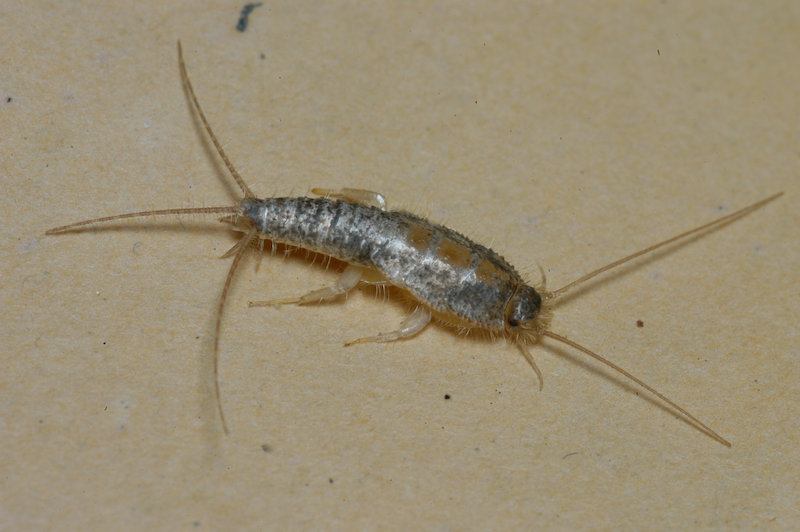Silverfish, Vol. 8, No. 19
Related News
September 10, 2013
June 24, 2013
June 20, 2013
April 11, 2013

“We keep finding these little gray bugs in the bathtub. They fall in and they can’t climb out. What are they and are they harming anything in our home?”
Silverfish are unusual insects because they do not have wings once they become adults, and they keep growing after they are sexually mature. Silverfish live outdoors, but they are also common inhabitants of most Mississippi homes, where they damage book bindings, stored papers, wall paper, photographs, cotton fabrics, and similar products. Items that have been in storage and left undisturbed for a long time are most likely to be damaged.
For most homeowners, the nuisance effect of seeing these grey, carrot-shaped, ½-inch long insects scurrying around the bathroom or other rooms in the house is more important than the relatively minor damage they do to paper products. But damage to books and other paper products can be significant when items are stored for long periods in moist, humid areas such as basements or attics. Silverfish will also occasionally feed on cotton, linen or silk clothing. If you notice holes in cotton or linen fabrics suspect silverfish, not clothes moths or carpet beetle, but all three groups of insects will feed on silk. Of course, silverfish do not live by carbohydrates alone; they also feed on dead insects and other sources of protein.
In homes with significant infestations, it is common to find these insects trapped in the sink or bathtub. Silverfish thrive in indoor areas with high humidity. They have an elongate body that tapers from head to tail, with two long antennae protruding from the head and three long filaments protruding from the rear. Silverfish are said to have “no metamorphosis” because the immatures are so similar to adults, and because adults continue to grow and molt even after they are sexually mature.
Control: Good moisture management, sanitation, and exclusion are the first steps to controlling silverfish. Avoid/repair water leaks; use ventilation to lower humidity; avoid excessive clutter; vacuum regularly and thoroughly, and store important documents in bug-proof containers. Ready-to-use spray or aerosol insecticides containing active ingredients like deltamethrin, cyfluthrin, cypermethrin, or bifenthrin will provide residual control when applied to cracks, crevices, and voids. This includes under and behind furniture and appliances, along baseboards, and to spaces between walls and storage boxes. Dusts containing deltamethrin can also be applied to cracks, crevices and voids, but use a professional bulb duster to avoid over-application. “Pest strips” containing dichlorvos can be used to control silverfish and other insect pests in infrequently used storage areas, such as garages, attics, crawl spaces, and sheds, where important books, papers, or articles of clothing are stored. Pest strips are not for use in homes or other areas occupied by people more than 4 hours per day. Follow label directions carefully. Avoid excessive or prolonged exposure to people or pets.
See page 39 of Extension Publication 2443, Control Household Insect Pests for more information on silverfish and silverfish control.
Blake Layton, Extension Entomology Specialist, Mississippi State University Extension Service.
The information given here is for educational purposes only. Always read and follow current label directions. Specific commercial products are mentioned as examples only and reference to specific products or trade names is made with the understanding that no discrimination is intended to other products that may also be suitable and appropriately labeled. Mississippi State University is an equal opportunity institution.
Bug’s Eye View is now on Facebook. Join the Bug's Eye View Facebook group here.